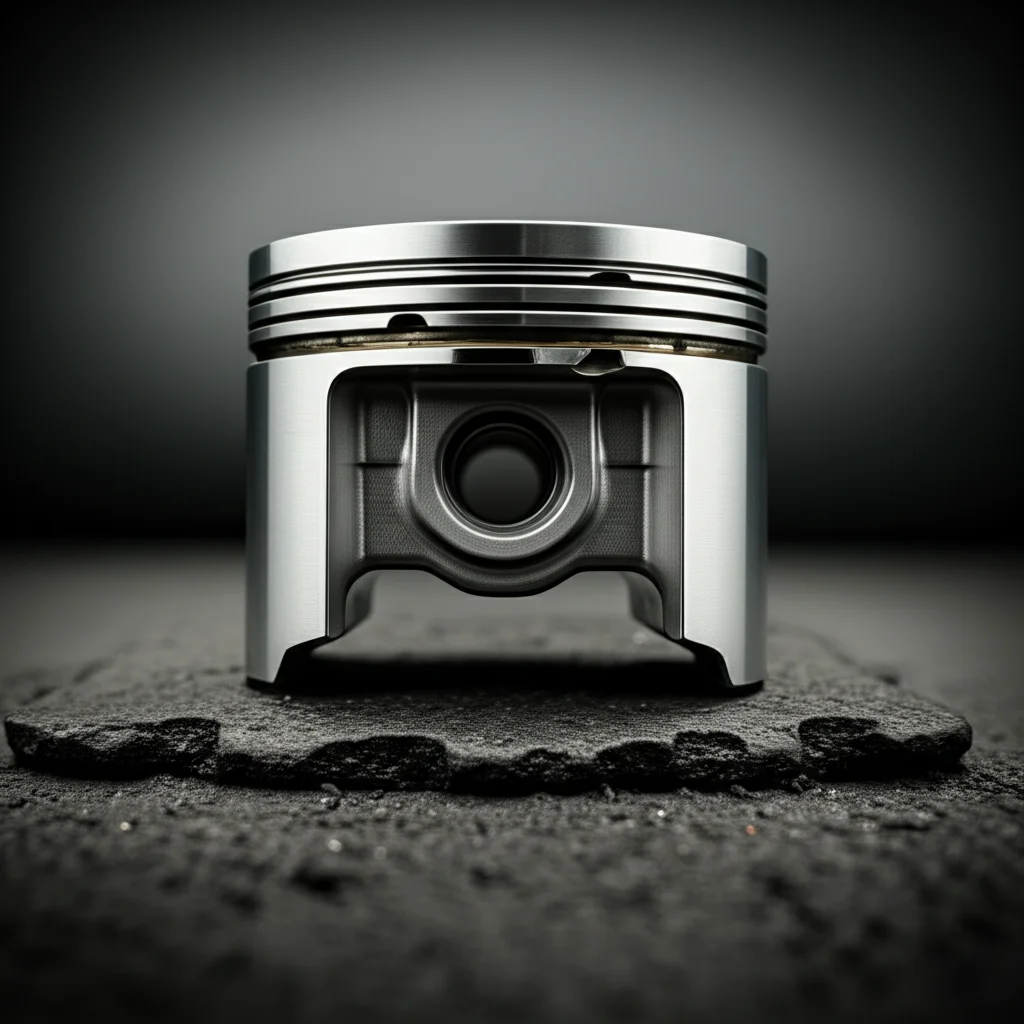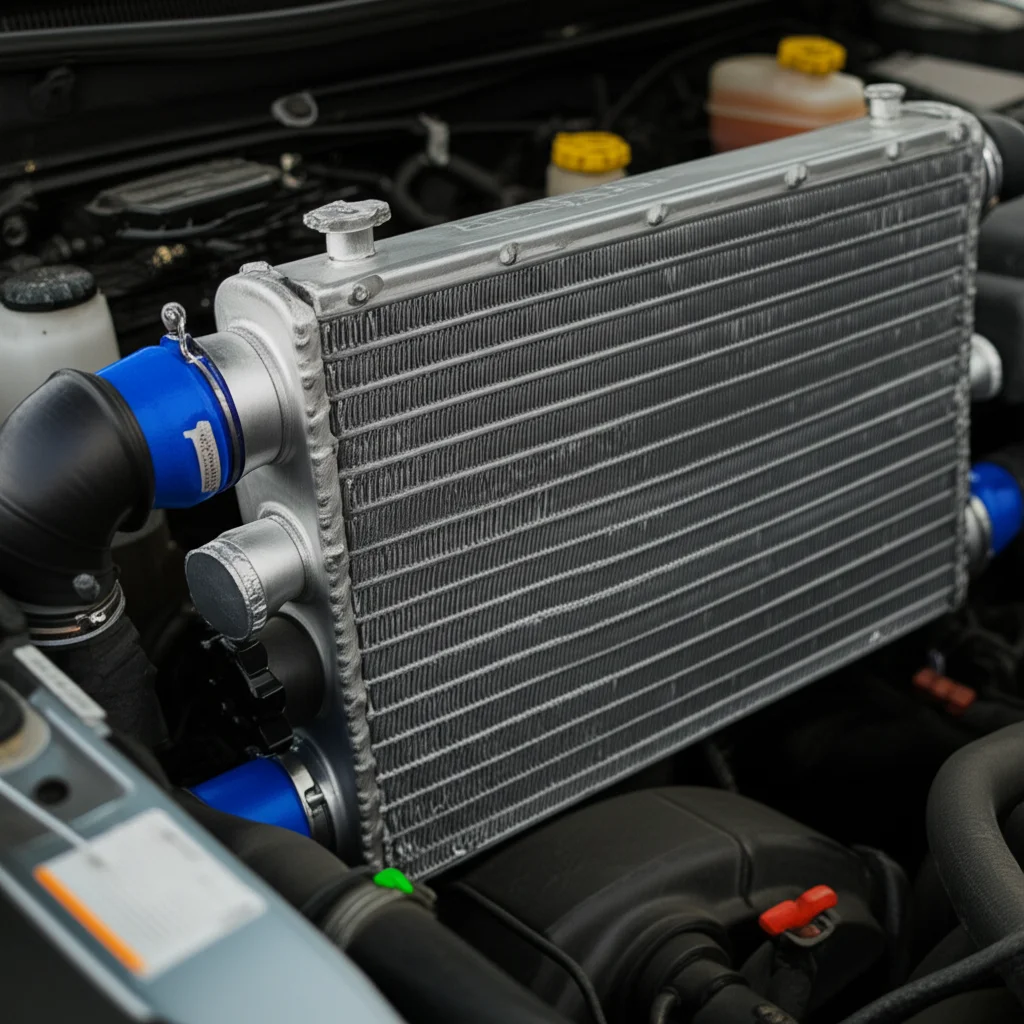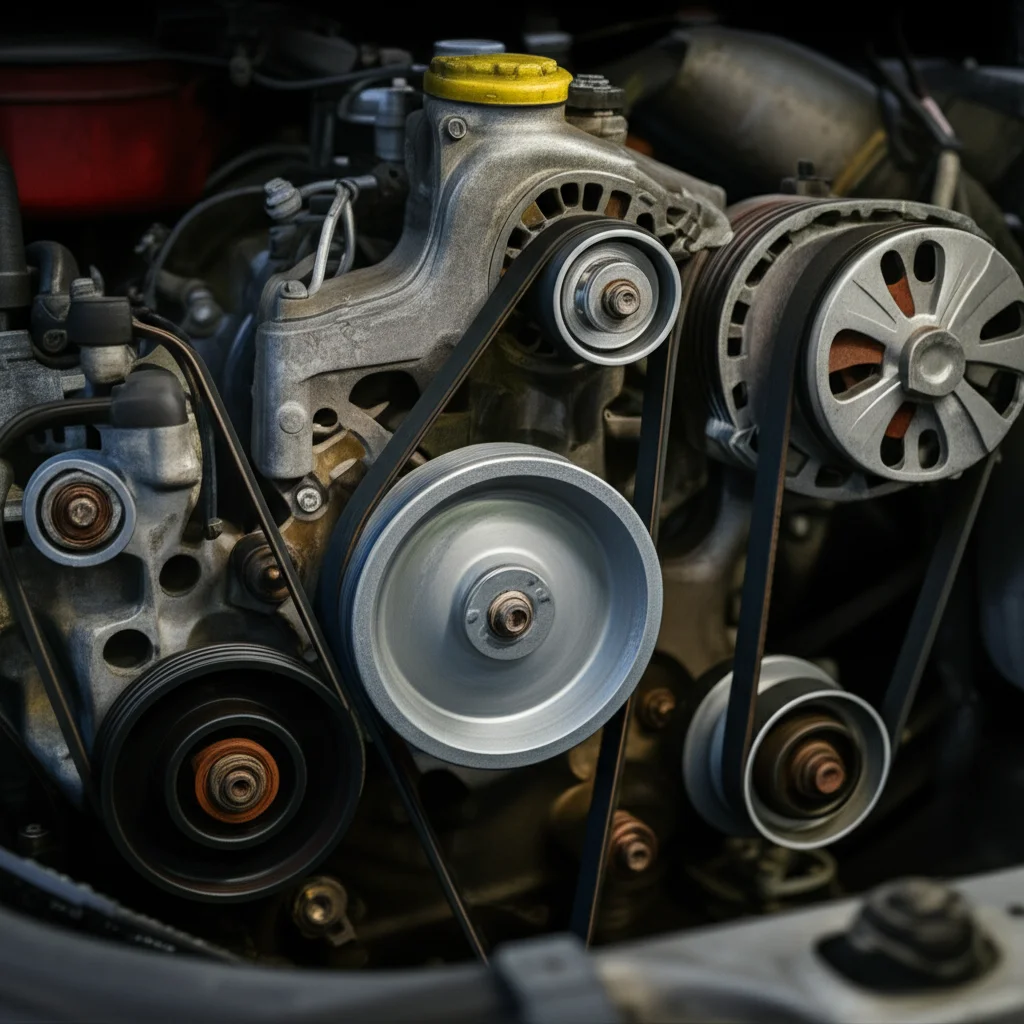· Todd Martin · Automotive Maintenance · 11 min read
How To Clean Piston Heads

Mastering Piston Head Cleaning: Boost Engine Power
Your car’s engine works hard. Over time, carbon deposits build up on piston heads. These deposits reduce engine performance and fuel efficiency. Learning how to clean piston heads can significantly improve your vehicle’s health. I understand the importance of a well-maintained engine. This guide will help you restore your engine’s power. We will cover why cleaning is important, what tools you need, and the steps to clean piston heads effectively.
Takeaway
Cleaning piston heads revitalizes your engine. It removes harmful carbon buildup. You can do this job yourself with the right tools and steps.
- Carbon buildup harms engine performance.
- Proper cleaning restores power and efficiency.
- Choose the right cleaning method for your situation.
- Safety is always important during the process.
Clear Answer to Main Query
To clean piston heads, you typically remove them from the engine. Then, you use chemical solvents and mechanical tools like scrapers and wire brushes. This process removes carbon deposits. Clean piston heads improve combustion and engine efficiency.
Why Clean Piston Heads? Understanding Carbon Buildup
Piston heads are crucial engine components. They are part of the combustion chamber. Fuel and air ignite above them. This ignition pushes the piston down. Over time, leftover fuel and oil burn incompletely. This creates carbon deposits on the piston heads. These deposits are hard and black. They stick to the piston surface.
Carbon buildup causes problems. It reduces the space in the combustion chamber. This changes the engine’s compression ratio. It can lead to engine knock or pinging sounds. Heavy deposits can also create hot spots. These hot spots can ignite fuel prematurely. This leads to pre-ignition. Pre-ignition damages engine parts.
Clean piston heads ensure proper combustion. They help maintain the correct compression. This leads to better engine power. It also improves fuel economy. Regularly cleaning piston heads is a key part of engine care. It helps your engine run smoothly for longer. I always prioritize this step for peak performance.
Signs You Need to Clean Your Piston Heads
Your engine will show signs of carbon buildup. Recognizing these signs helps you know when to clean. Common symptoms include reduced power output. Your car might feel sluggish. It may not accelerate as quickly as it used to. This happens because deposits disrupt proper combustion.
Another sign is decreased fuel efficiency. Carbon buildup makes the engine work harder. This uses more fuel. You might notice more frequent trips to the gas station. Engine knocking or pinging noises are also clear indicators. These sounds come from uncontrolled fuel ignition. This often happens on hot carbon deposits.
Rough idling is a common symptom. The engine might shake or vibrate more than usual. Starting the engine can become difficult. Black smoke from the exhaust is another warning. This smoke indicates incomplete fuel burning. If you notice these issues, it is time to consider cleaning your piston heads. Addressing these signs early prevents more serious engine damage.
Tools and Materials for Piston Head Cleaning
Gathering the right tools makes the job easier and safer. You will need a variety of items. For disassembly, you need a socket wrench set and a torque wrench. These help remove engine components safely. A piston ring compressor is vital for reassembly. It helps compress the rings for installation.
Cleaning supplies are next. You need chemical carbon removers or engine degreasers. Look for products designed for automotive use. A stiff wire brush is useful for scrubbing. A plastic scraper or a brass scraper helps remove stubborn deposits. Avoid steel scrapers on aluminum pistons. They can cause damage.
Safety gear is very important. Wear safety glasses to protect your eyes. Chemical-resistant gloves prevent skin exposure. A well-ventilated area is also necessary. This protects you from fumes. Rags or shop towels help clean up spills. A parts washer or a large basin is good for soaking parts. I always ensure I have these items ready before I begin.
Step-by-Step Guide: Cleaning Piston Heads Off-Engine
Cleaning piston heads requires removal from the engine. This is a more thorough process. It ensures complete carbon removal. You begin by carefully disassembling the engine. Remove the cylinder head first. Then, push the pistons out of the cylinder bores. Keep track of which piston came from which cylinder. This helps ensure correct reassembly.
Once the pistons are out, place them in a cleaning basin. Apply a generous amount of chemical carbon remover. Let the chemical soak into the deposits. Follow the product’s instructions for soaking time. This usually ranges from 30 minutes to several hours. The chemical softens the carbon. This makes it easier to remove. I often let them soak overnight for tough buildup.
After soaking, begin mechanical cleaning. Use a plastic or brass scraper to carefully scrape off the softened carbon. Be gentle. Avoid gouging the piston surface. Use a wire brush for remaining stubborn spots. Pay close attention to the top surface and valve reliefs. For piston rings, consider how to clean piston rings without removing them. However, for a full clean, remove the rings. Clean the ring grooves meticulously. Carbon buildup here can seize the rings.
Finally, clean the piston thoroughly with a solvent or degreaser. Rinse them well. Inspect each piston for any remaining deposits or damage. Ensure all surfaces are smooth. Lubricate the pistons and rings with engine oil before reinstallation. Proper cleaning here means better engine performance.
Safe Handling of Chemicals and Disposing of Waste
Working with engine cleaning chemicals requires caution. Always read product labels first. They contain important safety instructions. Many cleaners are strong acids or bases. They can cause skin and eye irritation. Always wear chemical-resistant gloves and safety glasses. I never start without them. Ensure your workspace has good airflow. Open garage doors or use fans. This prevents fume buildup. Inhaling fumes can cause respiratory problems.
Chemicals can also harm other surfaces. Protect your work area with drop cloths or old newspapers. If spills occur, clean them immediately. For general cleanups during the process, knowing how to clean grease stains can be helpful for rags or tools. If you spill chemicals on concrete, address it quickly. Similarly, learning how to clean oil from concrete applies to spills in your garage. Proper disposal of used chemicals is also critical. Do not pour them down drains. Many communities have hazardous waste collection sites. Contact your local waste management facility. They will guide you on safe disposal. Protecting yourself and the environment is key.
Preventing Future Carbon Buildup on Piston Heads
Preventing carbon buildup is better than cleaning it. Several practices help keep your piston heads clean. Use high-quality fuel. Premium fuels often contain detergents. These detergents help prevent deposit formation. Regular use of top-tier gasoline can make a big difference. I always recommend this to car owners.
Perform regular oil changes. Use the recommended engine oil for your vehicle. Dirty oil contributes to deposit formation. Frequent oil changes remove contaminants. This keeps your engine parts cleaner. Consider using fuel system cleaners periodically. These are additives you pour into your fuel tank. They help clean injectors and combustion chambers. They can slow carbon buildup.
Driving habits also play a role. Short trips and stop-and-go driving are harder on engines. They do not allow the engine to reach optimal operating temperature. This promotes carbon formation. Take your car on longer drives occasionally. This helps burn off deposits. It also allows the engine to reach higher temperatures. Following these steps extends the life of your engine. It keeps your piston heads cleaner for longer.
Common Mistakes to Avoid When Cleaning Piston Heads
Cleaning piston heads requires care. Many common mistakes can cause damage. Avoid using steel wire brushes or scrapers on aluminum pistons. Steel is harder than aluminum. It can scratch or gouge the piston surface. This damage affects engine compression. It can lead to oil consumption issues. Always use brass or plastic tools on aluminum.
Do not skip cleaning the piston ring grooves. Carbon builds up here heavily. This can cause piston rings to stick. Stuck rings do not seal properly. This leads to loss of compression and increased oil consumption. Use a dedicated piston ring groove cleaner tool. It ensures thorough cleaning. Also, do not mix different cleaning chemicals. They might react dangerously. Stick to one type of cleaner or follow manufacturer mixing instructions carefully.
Improper reassembly is another mistake. Forgetting to lubricate parts causes premature wear. Not tightening bolts to the correct torque specification leads to leaks or damage. Always use a torque wrench. Refer to your vehicle’s service manual for specific torque values. Incorrectly reinstalling piston rings can damage them. This includes neglecting to properly align the ring gaps. Learning how to clean piston rings without removing them might be tempting, but a full removal for cleaning often yields better results. Taking your time and being precise prevents these issues.
Professional vs. DIY Piston Head Cleaning
You have choices when it comes to cleaning piston heads. You can do it yourself (DIY) or hire a professional. DIY cleaning saves money on labor costs. You control the pace and quality of the work. It gives you a deeper understanding of your engine. This can be a rewarding experience. However, DIY cleaning requires tools and mechanical skills. You need a suitable workspace. It takes a significant amount of time. You also face the risk of making mistakes. Improper cleaning or reassembly can damage the engine.
Professional cleaning offers convenience. Mechanics have specialized tools and experience. They can often identify other engine issues. This ensures a thorough job. They also handle waste disposal. However, professional service costs more. It is a good choice if you lack time, tools, or confidence. For minor buildup, some professionals use chemical induction methods. This avoids engine disassembly. It might not clean as thoroughly as off-engine methods. Consider your comfort level, budget, and the extent of the carbon buildup. Both options can work well.
Frequently Asked Questions
How often should I clean my piston heads? The frequency depends on your driving habits and vehicle. For most cars, cleaning piston heads is not a routine maintenance item. You usually clean them when experiencing symptoms like reduced power or knocking. Preventative measures like quality fuel and oil changes are more common. Consider cleaning during major engine overhauls or if specific issues arise.
Can fuel additives really clean piston heads? Fuel additives can help reduce light carbon buildup. They work by adding detergents to the fuel. These detergents burn off some deposits. However, they are less effective on heavy, hardened carbon. They cannot fully clean piston heads with severe accumulation. Think of them as a preventative measure or for very minor issues.
What is engine “knocking” and how does it relate to piston heads? Engine knocking is a metallic rattling sound. It happens when fuel ignites prematurely in the cylinder. Carbon deposits on piston heads can cause hot spots. These hot spots ignite the air-fuel mixture before the spark plug fires. This uncontrolled combustion causes the knocking. Cleaning the piston heads removes these hot spots.
Is it safe to use oven cleaner on piston heads? No, it is not safe to use oven cleaner on piston heads. Oven cleaners contain harsh chemicals. These chemicals can damage engine metals, especially aluminum. They can corrode surfaces. Always use automotive-specific carbon removers. These products are formulated to be safe for engine components. Using the right product prevents costly damage.
What are the risks of not cleaning dirty piston heads? Not cleaning dirty piston heads leads to several risks. Reduced engine performance is a common outcome. You will experience lower power and poorer fuel economy. Severe carbon buildup can cause pre-ignition or engine knock. This puts stress on internal engine parts. It can lead to serious engine damage over time.
Can I clean piston heads without removing the engine? Yes, some methods aim to clean piston heads without full engine removal. Chemical induction cleaning involves spraying a cleaner into the intake system. Fuel additives also work this way. These methods are less invasive. They are generally effective for light to moderate buildup. However, for heavy deposits, off-engine cleaning is usually needed.
Conclusion
Cleaning piston heads is a vital task for engine health. Carbon buildup is a common problem. It reduces engine power and efficiency. Understanding the causes helps you prevent it. Taking the time to properly clean piston heads restores your engine’s performance. You will notice better fuel economy and smoother operation.
Whether you choose to clean them yourself or hire a professional, the effort is worth it. Proper tools and safety are essential. Following detailed steps ensures a successful job. Remember, preventing future buildup saves time and money. Use high-quality fuel and change your oil regularly. A well-maintained engine lasts longer and runs better. Take action to keep your piston heads clean. Your vehicle will thank you.
- piston cleaning
- engine carbon removal
- automotive maintenance




